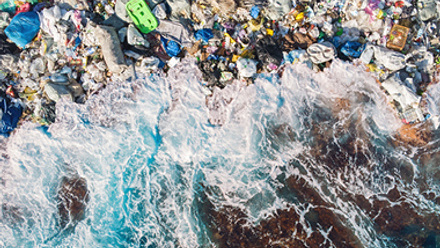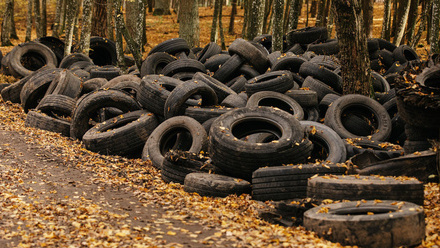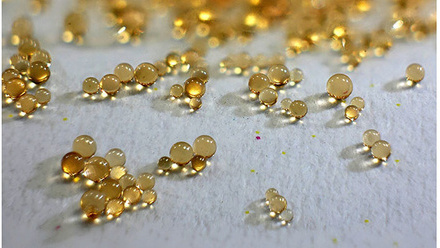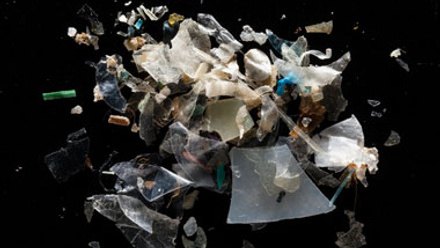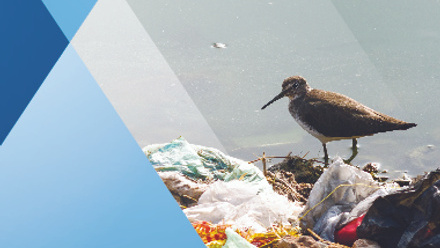The Fate and Effects of Micro- and Nano-Plastics in Relation to Ecosystems
Carlos Edo, Universidad de Alcalá; Francisca Fernández-Piñas, Universidad Autónoma de Madrid; Miguel Oliveira, Universidade de Aveiro; Gerardo Pulido-Reyes, Universidad Autónoma de Madrid
The session, “The Fate and Effects of Micro- and Nano-Plastics in Relation to Ecosystems,” took place during the SETAC Europe 34th Annual Meeting.
Session Organization
The event was structured into three distinct sub-sessions. The selected posters were displayed in the venue with a great interest from the attendants. Later, the main session consisted of four platform presentations, followed by three five-minute poster spotlights. Right after, the Poster Corner closed the session, containing six diverse discussion topics.
The sessions attracted a large audience, bringing in many attendees who were deeply involved in discussing the topics presented. This created a dynamic scientific environment and promoted open and thought-provoking discussions.
The main thread of the sub-sessions is summarized below.
Platform Presentations
The primary objective of this session was to address a broad range of topics related to microplastics (MPs) and nanoplastics (NPs), distinct from the themes covered in the two other sessions of the day (soil ecosystems and fibers). This session covered multitude of subjects, including the characterization and detection of MPs and NPs, ecotoxicology, remediation, bioaccumulation and future key areas such as genetics and human health.
The session began with a talk on the mechanisms implicated in the fragmentation and degradation of plastics, accompanied by an overview of the methodologies employed to collect such data, delivered by Wendel Wohlleben, BASF. The topic subsequently transitioned to the ecotoxicological impacts of MPs and their additives on marine ecosystems, algae and bacteria, thereby underscoring the magnitude of these concerns (Tania Gomes, NIVA). After that, Christoph Schuer from Eawag continued diving into the study of long-term effects and multigenerational changes in Daphnia magna. Concluding the session, Xiaoyu Duan from the University of Southern Denmark presented a novel study that elucidated the influence of NPs on neurological functions, behavioral patterns and molecular-level consequences in fish.
Poster Spotlights
Following the platform presentations, three posters were presented as spotlights and complemented the oral session. These presentations introduced several interesting topics associated with MPs. One such topic was the role of plastic waste from greenhouse agriculture as a carrier for pathogens and antibiotic resistance genes (ARGs), and how these can spread to the surrounding environments through plastics. This was followed by a detailed study on proteomics and the binding of proteins to both pristine and leached MPs, aiming to understand the basic processes that drive the formation of ecocorona. Lastly, to enhance our understanding of the adsorption interactions between environmental DNA (eDNA) and polymer surfaces, a comprehensive study was presented on the detection and behavior of eDNA adsorbed onto MPs after different treatments.
Poster Corner
In this final session, several posters were presented and discussed as an open debate and covered diverse topics. These included the presence of plastic in sources of potable water and the exposure of humans to these plastics; the reproducibility of experiments relating to NPs and their environmental significance; and the modeling techniques developed to predict the fragmentation and degradation of plastics using existing data. The session also covered the physical phenomena of low-density MPs in rivers and explained the destiny of plastic particles based on turbulence, biofilm and sedimentation. Additionally, a study on ecotoxicity in freshwater microcosms was presented, highlighting this experimental approach as the most representative of our natural ecosystems. The session concluded with a study that investigated the transfer of MPs in different sea compartments and their importance to living organisms.
Author’s contact: [email protected]

